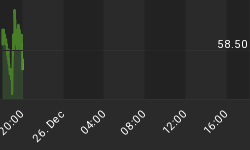Back in mid-2007 I posted a column titled "Death Spiral" that made some (for that time) extreme predictions. Here are the last few paragraphs:
Anyone who thinks the Eurozone welfare states will maintain their composure with the euro at, say, $1.50, simply doesn't understand how democracy works in this late, decadent stage of its evolution. If the dollar keeps falling against the euro -- as market forces pretty much guarantee that it will in the absence of major intervention -- the euro system will have a nervous breakdown. Under pressure from exporters no longer able to sell to U.S. consumers, member governments will change the ECB charter and force it to cut rates, or they'll start opting out of the common currency, or they'll adopt wildly inflationary tax-and-spend policies designed to offset the rising euro.
However it plays out, the result will be a world in which competitive devaluations drive the price of all the major currencies inexorably towards their intrinsic value, which is the paper on which they're printed. But it might be a while before most people notice. As surreal as this sounds, if the major fiat currencies are falling more or less in tandem, they'll appear to be stable. That's been the case for the past few years, with the prices of oil, gold, healthcare and food soaring (which is another way of saying that paper currencies are plunging) while mainstream analysts proclaim inflation low and many of the world's currencies "strong."
But as this process accelerates, the fiction of strong and weak currencies will be harder and harder to sell. Inflation will migrate from "good" things like houses and stocks to life's necessities, and the link between prices and the unit in which prices are expressed will become clear to everyone. Then the death spiral begins.
Well, this week Europe had its nervous breakdown. A year of holding interest rates up to battle inflation caused the euro to soar against the dollar, which made it harder for European exporters to sell to the rest of the world, which contributed to the implosion of most European economies.
Continental governments are responding just as you'd expect, with policies that lower the value of the euro. The dollar and Japanese yen are both soaring in relative terms, which will make bad domestic conditions even worse -- though at the moment neither the U.S. nor Japan needs any prodding from their exporters to run their printing presses 24/7 and bail out pretty much anything that moves. Now the stage is set for all the world's fiat currencies to start falling in tandem. The Death Spiral has begun.
BUY GOLD AND SILVER BULLION AT GOLDMONEY















